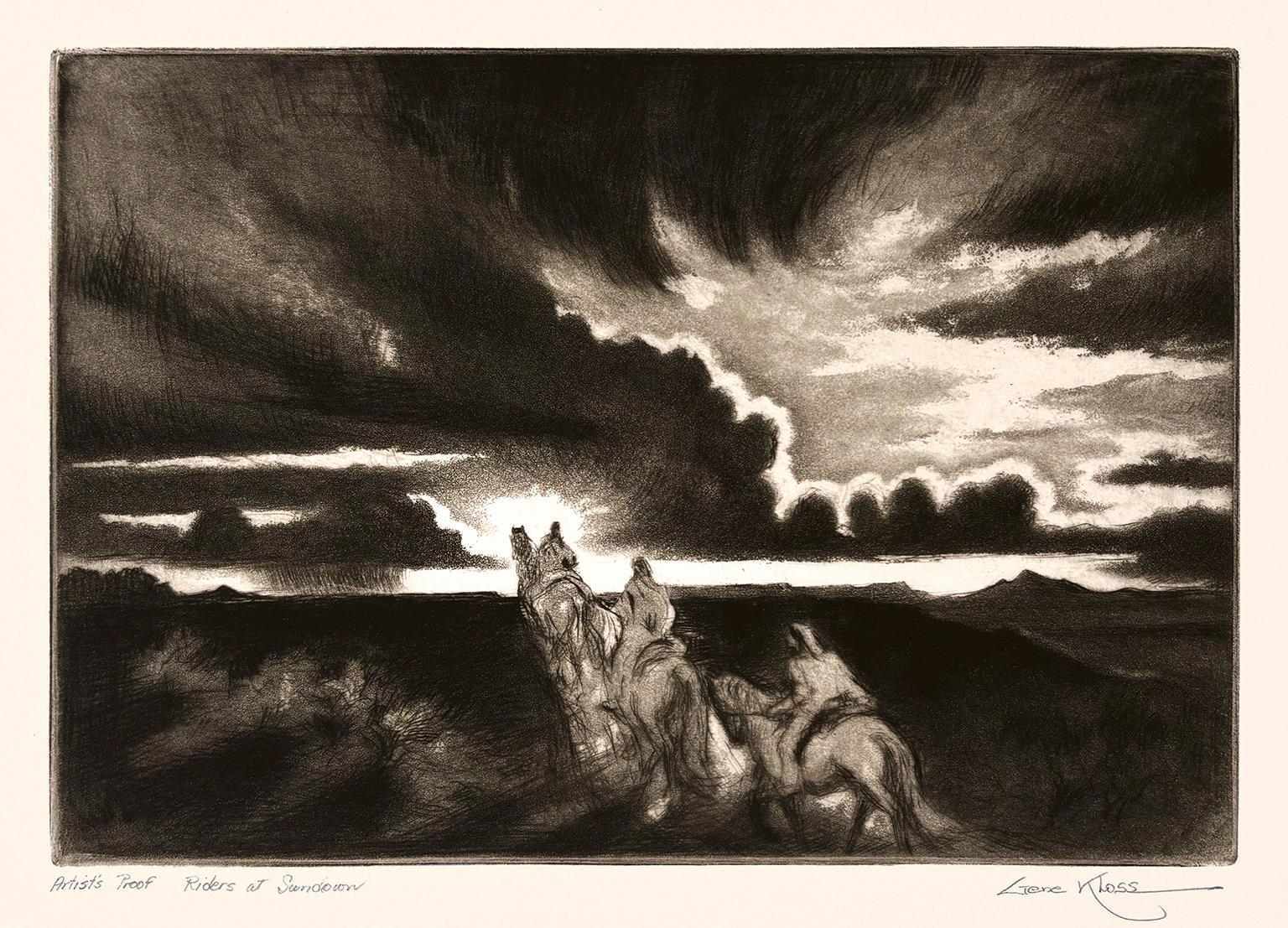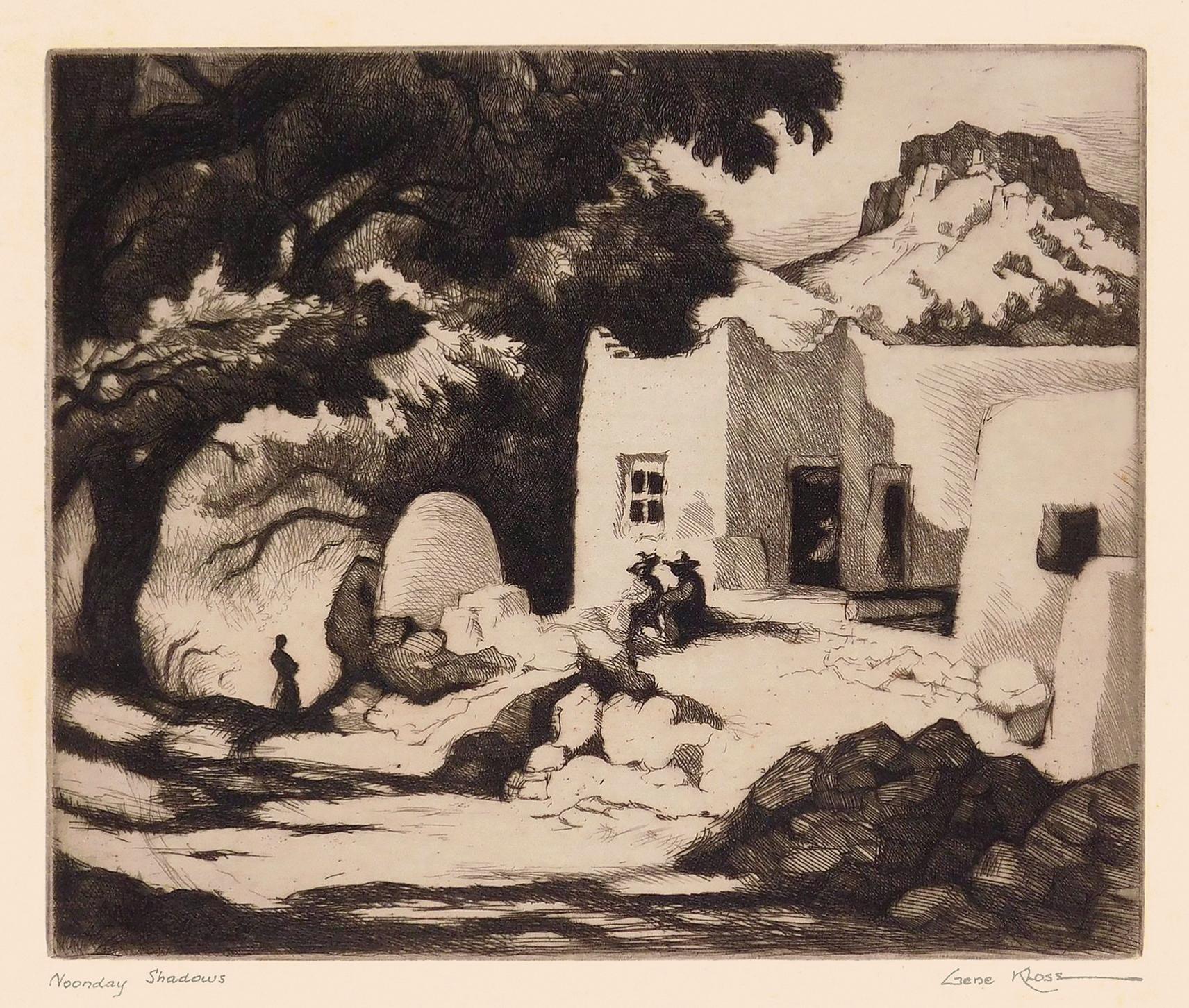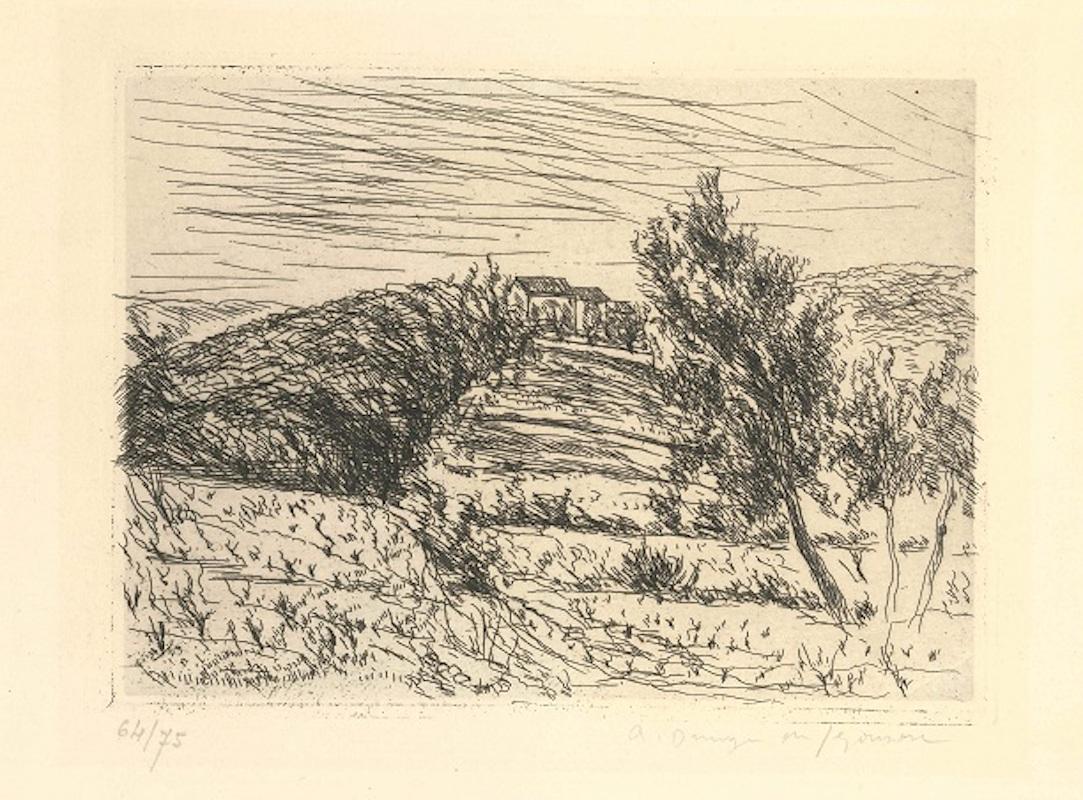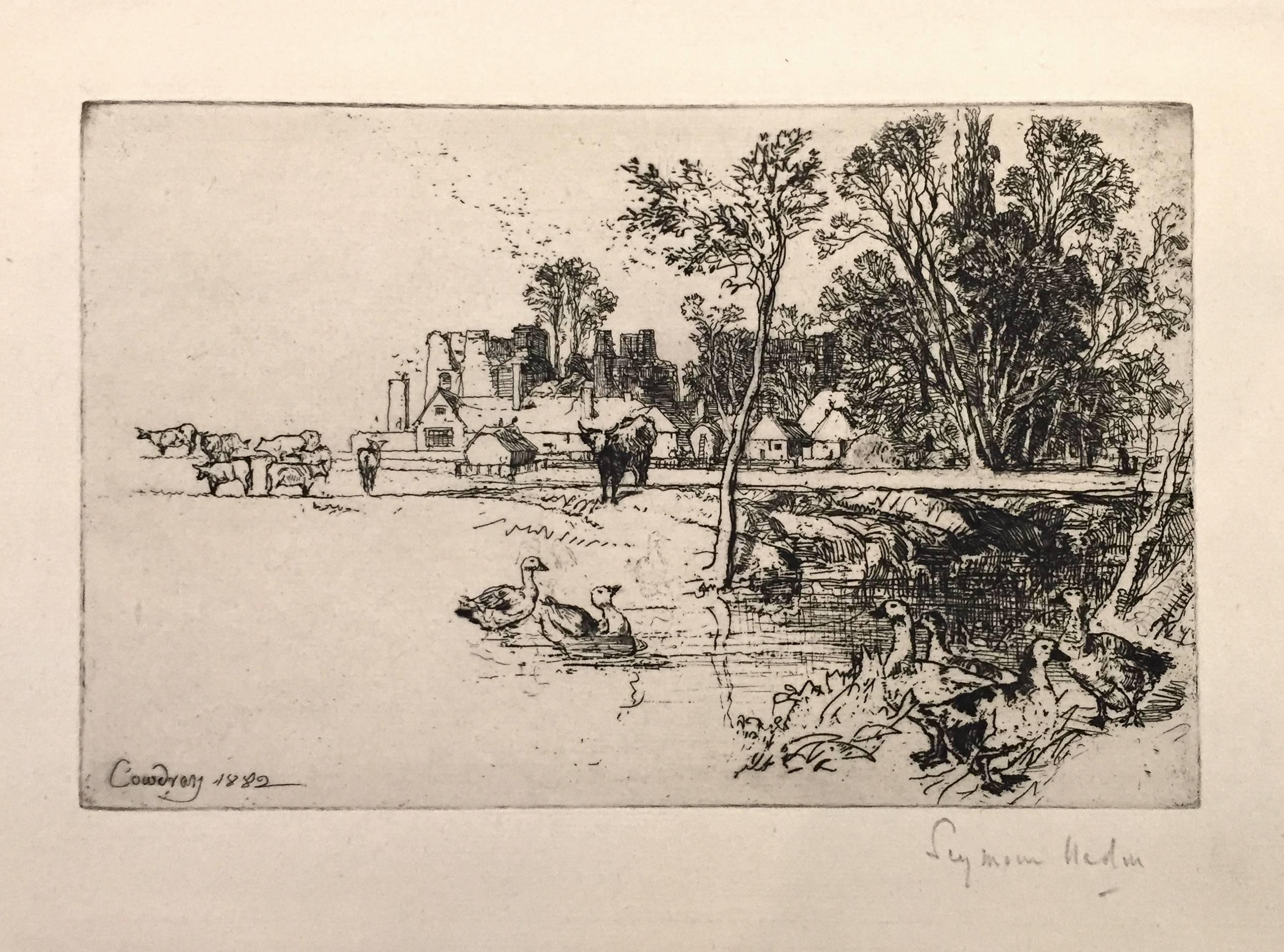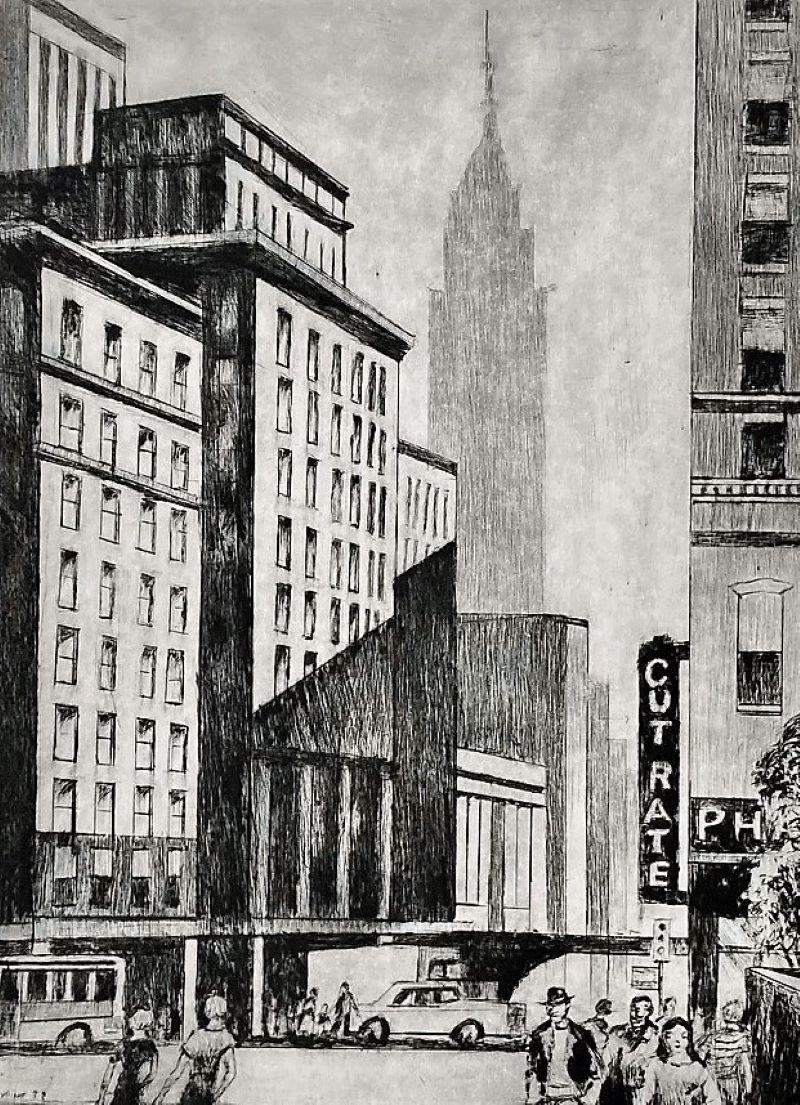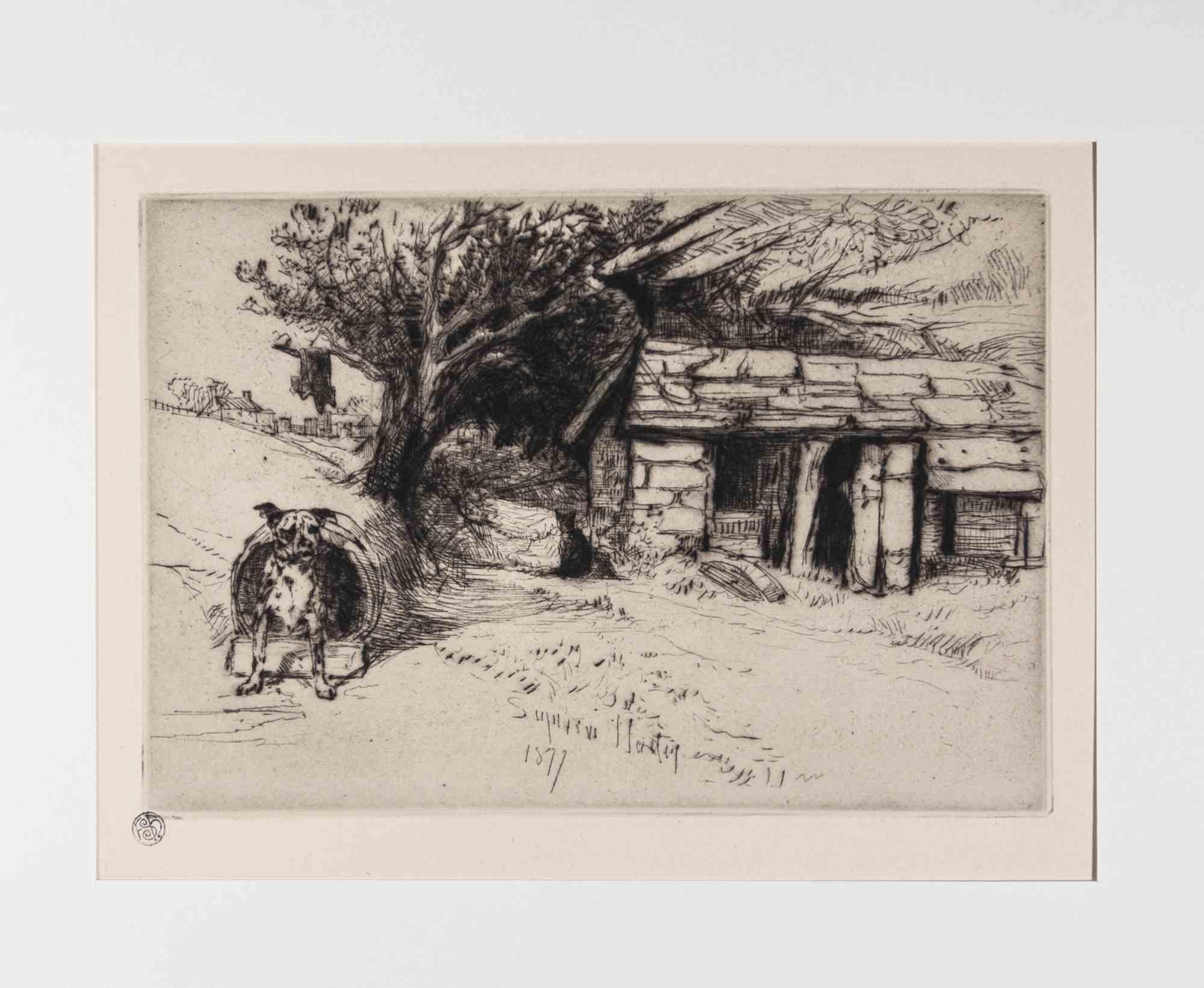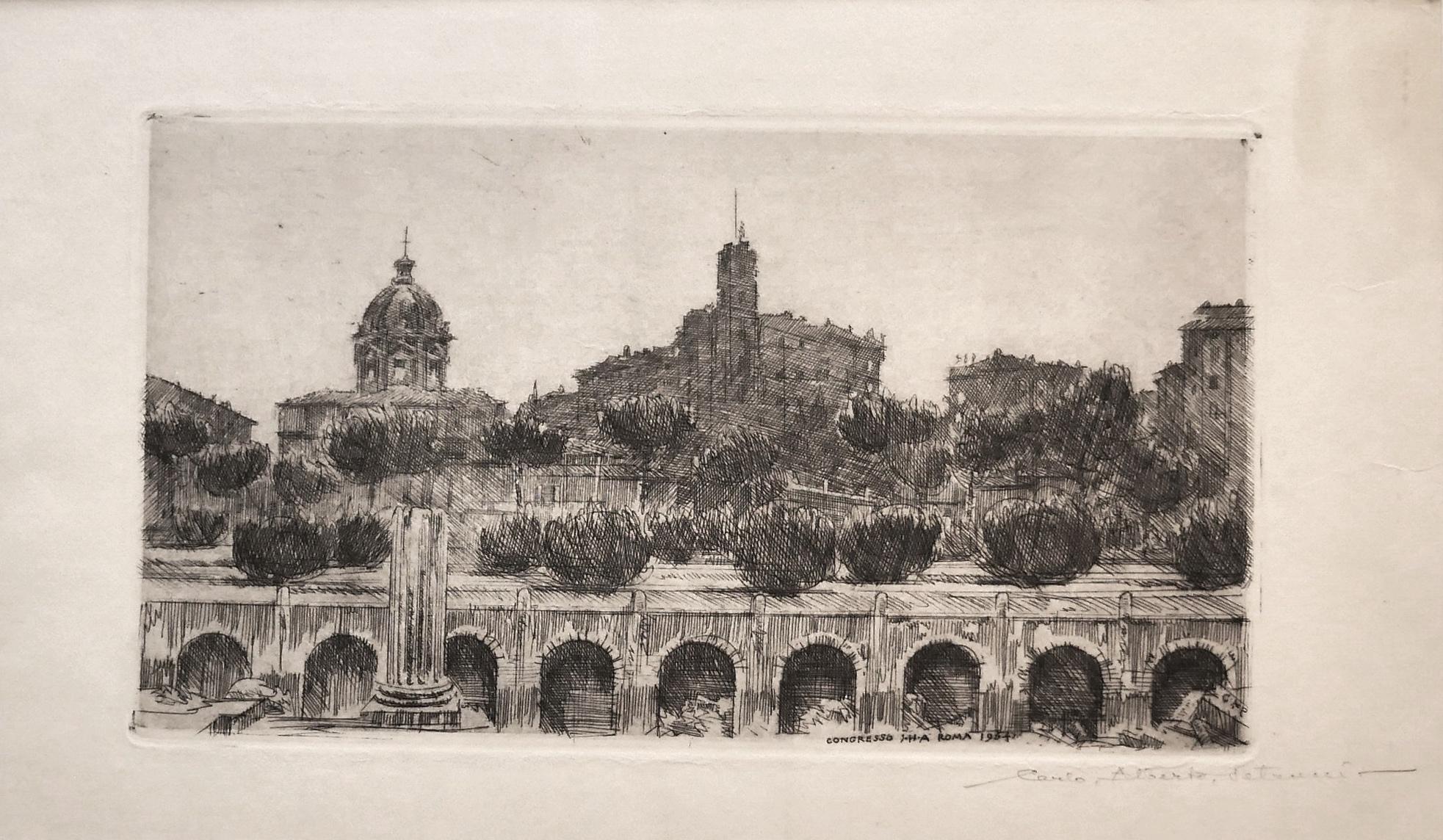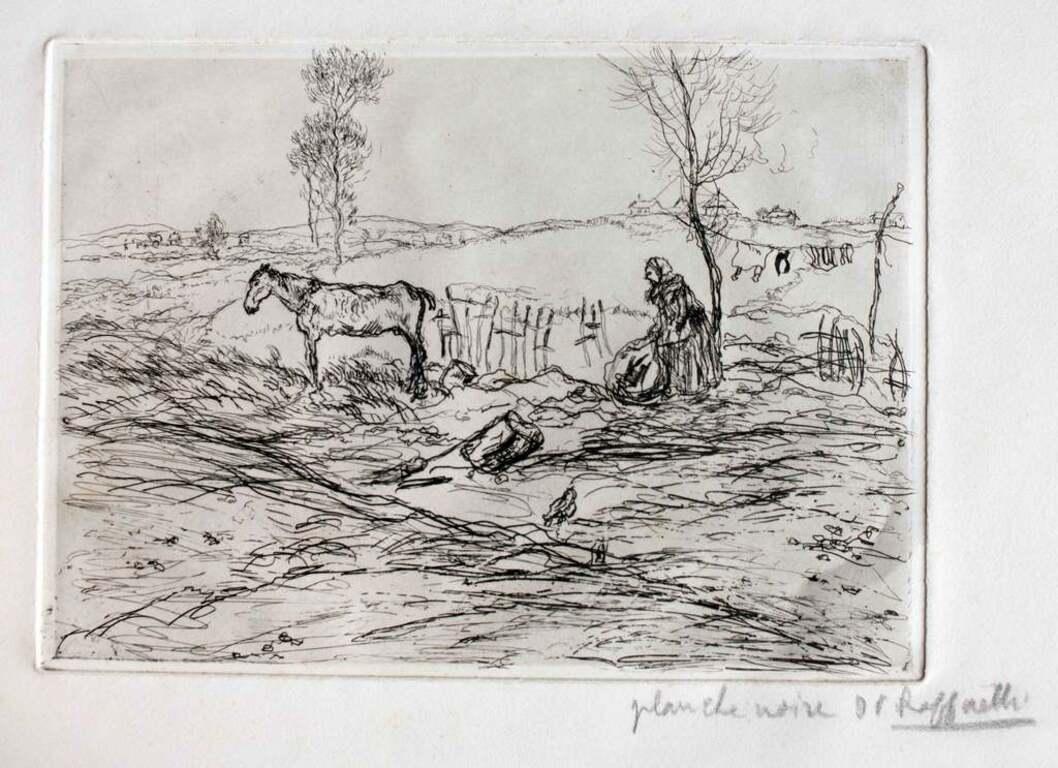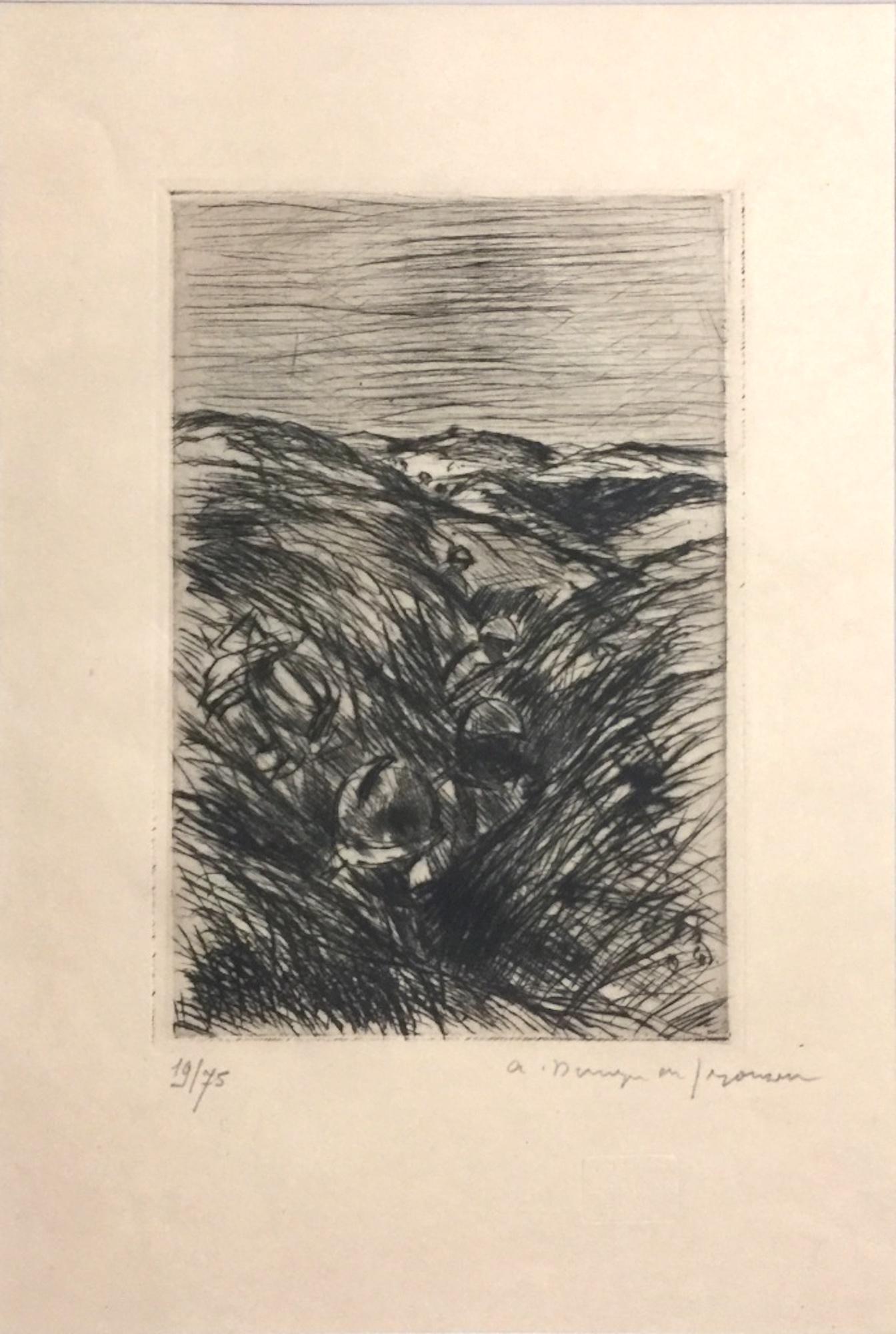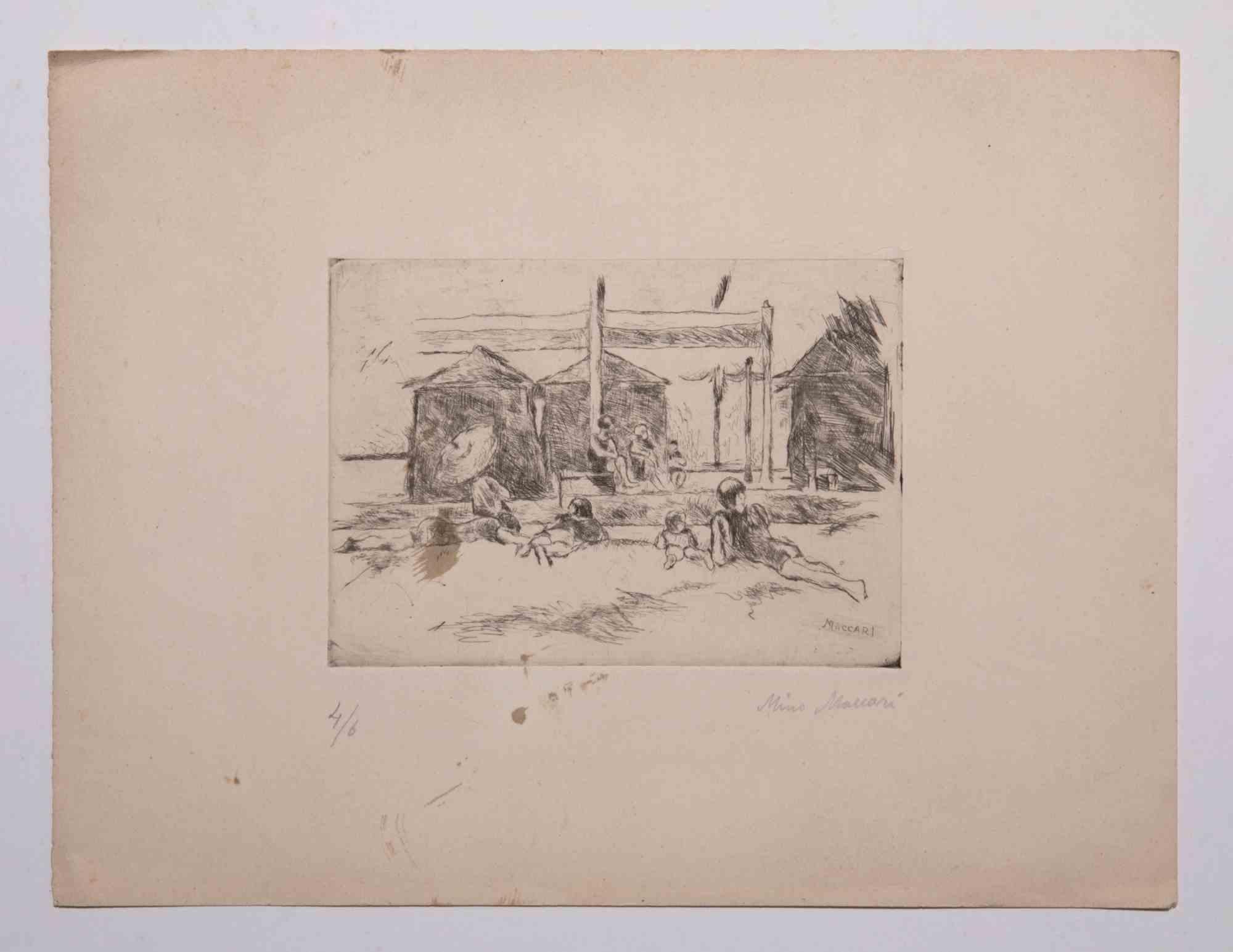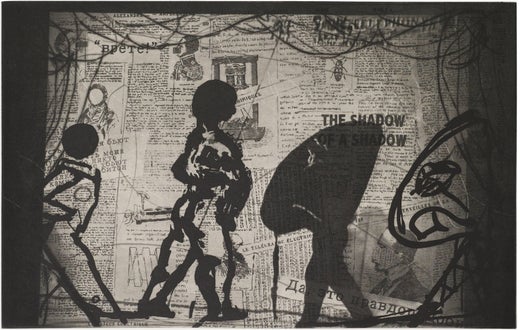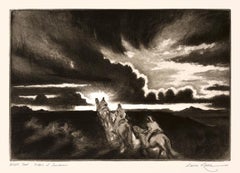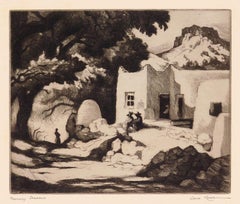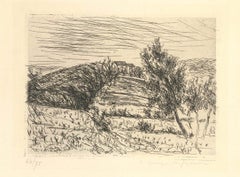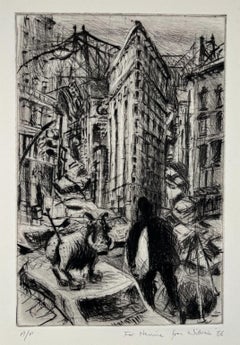
Flatiron Building
View Similar Items
Want more images or videos?
Request additional images or videos from the seller
1 of 2
William KentridgeFlatiron Building1985
1985
About the Item
- Creator:William Kentridge (1955, South African)
- Creation Year:1985
- Dimensions:Height: 7.75 in (19.69 cm)Width: 3.25 in (8.26 cm)Depth: 0.1 in (2.54 mm)
- Medium:
- Movement & Style:
- Period:
- Condition:
- Gallery Location:New York, NY
- Reference Number:1stDibs: LU515312241042
William Kentridge
William Kentridge (b. 1955) is an internationally acclaimed South African artist renowned for his dynamic prints, drawings, large-scale installations, and animated films. Kentridge balances universal experiences with the complexity of South African political history and society. Born in Johannesburg to two prominent lawyers active in anti-apartheid efforts, Kentridge’s proximity to the dissolution of apartheid gave him a unique social sensitivity. His upbringing would shape the socio-political lens that informed his work as an artist.
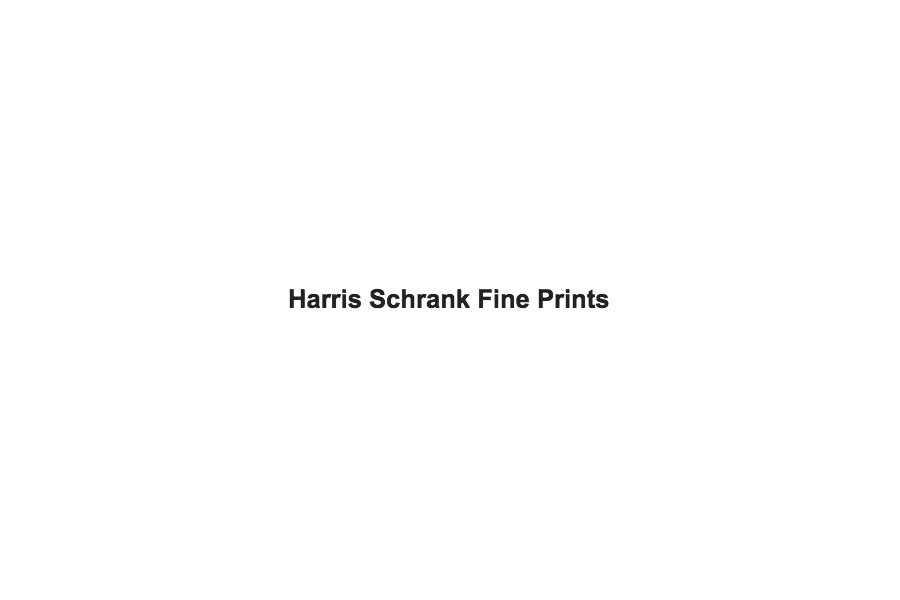
About the Seller
4.9
Recognized Seller
These prestigious sellers are industry leaders and represent the highest echelon for item quality and design.
Gold Seller
Premium sellers maintaining a 4.3+ rating and 24-hour response times
Established in 2000
1stDibs seller since 2016
106 sales on 1stDibs
Associations
International Fine Print Dealers Association
Authenticity Guarantee
In the unlikely event there’s an issue with an item’s authenticity, contact us within 1 year for a full refund. DetailsMoney-Back Guarantee
If your item is not as described, is damaged in transit, or does not arrive, contact us within 7 days for a full refund. Details24-Hour Cancellation
You have a 24-hour grace period in which to reconsider your purchase, with no questions asked.Vetted Professional Sellers
Our world-class sellers must adhere to strict standards for service and quality, maintaining the integrity of our listings.Price-Match Guarantee
If you find that a seller listed the same item for a lower price elsewhere, we’ll match it.Trusted Global Delivery
Our best-in-class carrier network provides specialized shipping options worldwide, including custom delivery.More From This Seller
View AllAux Approches de Madrid (also Aux Abords de la Ville)
By Adolphe Beaufrère
Located in New York, NY
Adolphe-Marie Beaufrere (1876-1960), Aux Approches de Madrid (also Aux Abords de la Ville), drypoint, 1927, signed and numbered (14/55), from the edition of 55, with the blindstamp of Sagot, publisher (Lugt 2254). Reference: Morane 27-19. In good condition, on very thin cream Japan paper, 6 1/2 x 9, the sheet 8 3/8 x 11 1/4 inches, archival matting.
A fine impression, with the drypoint burr extremely rich and effective (due in part to the use of a Japan paper, which tends to diffuse the ink surrounding the drypoint lines).
Beaufrere was born at Quimperle, in Brittany, and though he traveled widely he re-connected with this area throughout his life. As a teenager he decided that he wanted to become an artist and he traveled to Paris where, shortly after his arrival, he encountered the eminent Gustave Moreau, who took him on as a student. Moreau encouraged him to study old master prints, especially the prints of Rembrandt and Durer, which were available in the Cabinet des Estampes in Paris – this was to be critical in his development.
Beaufrere began printmaking in about 1904, with some woodcuts, but soon got into etching and engraving. Curiously, one of his colleague/teachers at the time was the Canadian etcher Donald Shaw MacLaughlan. He began showing his prints, with some success, but after his marriage in 1905, and with the urging of his new wife, moved out of Paris and back to Brittany. This move had a mixed effect on his career – contacts with other artists became fewer, but he did maintain gallery relationships, and the French countryside and it’s inhabitants would provide a continuing source of inspiration.
During the Great War Beaufrere served in the infantry, and had few opportunities to make art. But he did study a volume of Rembrandt’s prints...
Category
1920s Modern Landscape Prints
Materials
Drypoint
La Fumee du Bateau
By Jean-Francois Raffaelli
Located in New York, NY
Jean-François Raffaëlli (1850-1924), La Fumee du Bateau, color etching and drypoint, 1911, signed and numbered in pencil lower right. Reference: Delteil 98. In very good condition, ...
Category
1910s Realist Landscape Prints
Materials
Drypoint, Etching
Walking in the Woods
By Frank Arthur Nankivell
Located in New York, NY
Frank Arthur Nankivell (18691959), [Walking in the Woods at Night], drypoint, c. 1910, signed in pencil lower right. Printed on a cream laid paper. In good condition, with margins (s...
Category
1910s American Realist Landscape Prints
Materials
Drypoint
The Avon on the Road to Bexhill
By Theodore Casimir Roussel
Located in New York, NY
Theodore Roussel (1847-1926), The Avon on the Road to Bexhill, drypoint, 1919, signed in pencil and dated (15.7.19) lower left [also signed in the plate]. Reference: Hausberg 115, f...
Category
1910s Impressionist Landscape Prints
Materials
Drypoint
A Street in Ventnor, Isle of Wight
By Theodore Casimir Roussel
Located in New York, NY
Theodore Roussel (1847-1926), A Street in Ventnor, Isle of Wight, etching, soft ground etching, drypoint, 1912, signed in pencil on the tab and inscribed...
Category
1910s Impressionist Landscape Prints
Materials
Drypoint, Etching
Shadows, Garage at Night
By Martin Lewis
Located in New York, NY
Martin Lewis (1881-1962, Shadows, Garage at Night, drypoint, 1928, signed in pencil lower right [also signed in the plate lower right]. Reference: McCarron 69, only state, from the t...
Category
1930s American Realist Landscape Prints
Materials
Drypoint
You May Also Like
'Riders at Sundown' — Mid-Century Southwest Regionalism
By Gene Kloss
Located in Myrtle Beach, SC
'Riders at Sundown', aquatint and drypoint, edition 75, 1953, Kloss 451. Signed, titled, and annotated 'Artist's Proof' in pencil. A superb, richly-inked, atmospheric impression, in ...
Category
1950s American Modern Landscape Prints
Materials
Drypoint, Aquatint
'Noonday Shadows' — Mid-Century Southwest Regionalism
By Gene Kloss
Located in Myrtle Beach, SC
'Noonday Shadows', etching and drypoint, edition 75, 1941, Kloss 376. Signed, and titled in pencil. A superb, richly inked impression, in warm black ink, on buff wove paper, in excel...
Category
1950s American Modern Landscape Prints
Materials
Drypoint, Etching
The Fair
By James Abbott McNeill Whistler
Located in Storrs, CT
The Fair. 1895-96. Lithograph. Way 92, Levy 144, Tedeschi, Stratis and Spink 135 state ii. Image 9 1/4 x 6 1/2 (sheet 13 x 9 5/8). A fine impression printed on antique cream-laid paper. Way lists 15-lifetime impressions (Goulding printed...
Category
Late 19th Century American Modern Figurative Prints
Materials
Drypoint, Etching
$2,450 Sale Price
30% Off
La colline de Sainte Anne - Original Etching by Dunoyer de Segonzac - 1925
By André Dunoyer de Segonzac
Located in Roma, IT
Image dimensions: 13 x 18 cm.
Etching on ivory colored paper.
Etching on ivory colored paper, with two embossing stamps: "Libreria Prandi Reggio E." in lower-right corner,"H. Peti...
Category
1920s Modern Figurative Prints
Materials
Drypoint, Etching
Cowdray Castle (with Geese)
By Sir Francis Seymour Haden, R.A.
Located in Roma, IT
Beautiful proof on vergé crème, signed by the artist in pencil.
Full margins. Ex-coll. H.H. Benedict (Lugt 1298).
Ref. Cat. Harrington 221; Schneiderman 208.
Category
1880s Modern Landscape Prints
Materials
Drypoint, Etching
The Spire -- New York
By Lawrence Wilbur
Located in Storrs, CT
The Spire -- New York. 1985. Etching and drypoint. 14 1/2 x 11 (sheet 22 1/2 x 18). Trial proof of the second third, prior to the edition of 100. Printed on Rives cream wove paper, on the full sheet with deckle edges. A rich impression in pristine condition, housed in an archival sleeve. This etching has never been matted. Provenance: the artist's estate. Titled, annotated 'third state - trial proof' and signed in pencil. A dramatic view of the Chrysler Building.
Painter and printmaker Lawrence Nelson...
Category
20th Century American Modern Figurative Prints
Materials
Drypoint, Etching
$350 Sale Price
58% Off
Recently Viewed
View AllMore Ways To Browse
Russian Car
De Distel
Harold Altman Signed Lithographs
Jonathan Green Signed Art
Peter Max Sailboat
Thomas Mcknight Framed
Banksy Dismaland
Constable Lucas
Frank Benson Etchings
Iran Poster
Man O War Horse
Michele Cascella
N Currier Lithograph
Radcliffe Camera
Robert Stanton
Roger Muhl
Andrew Wyeth Poster
Color Palette Tiffany Blue
